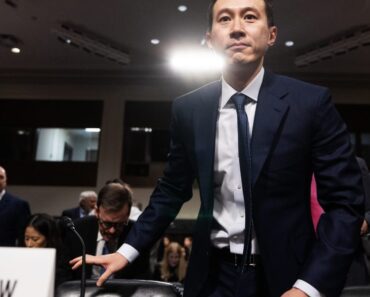This post was originally published on this site
https://fortune.com/img-assets/wp-content/uploads/2024/04/Steinbach-David-cropped-e1712070658564.jpg?w=2048
Ever since the Federal Reserve began hiking interest rates to fight inflation in March 2022, the real estate industry has been stuck in a deep freeze. High mortgage rates and even higher home prices have made buying a new home nearly impossible for many Americans; renters are facing record costs; and the commercial real estate sector is stuck in a nightmare scenario. Shifting working trends and rising borrowing costs slashed commercial real estate values by $590 billion in 2023 alone—and another $480 billion is expected to evaporate this year, according to Capital Economics.
While the pain has been severe for many in the real estate industry over the past few years, some veteran operators see opportunity. After all, the old saying in investing is “buy low, sell high,” and that means not everyone is running scared from this real estate market.
Hines, a global real estate investment, development, and property manager with $93.2 billion in assets under management, is even launching a platform that will enable wealthy clients to access new opportunities in real estate called Hines Private Wealth Solutions. With an increasing number of investors looking to allocate up to 30% of their portfolios to alternatives as the shift away from the classic 60-40 portfolio of stocks and bonds continues, Hines hopes to provide an easy way to gain diversified, global real estate exposure and capitalize on the $85 trillion of expected growth in the private wealth space over the next decade.
The company has hired Paul Ferraro, formerly the head of Carlyle Private Wealth, to lead the global private wealth strategy, and raised $10.7 billion for the venture as of Dec. 31.
Hines’ platform will offer a wide variety of real estate investment solutions for clients, including non-traded private real estate investment trusts, private placements, private debt, tax-deferred exchanges, development projects, and more. The company will also provide advisory solutions for clients that need direction when managing their personal real estate holdings.
As Hines’ global chief investment officer, David Steinbach, told Fortune, the goal of the new platform is to help investors take advantage of the beginning of a new real estate cycle, meet specific risk/return objectives, and reduce portfolio volatility.
“This is a great vintage, it’s a great moment,” he said. “This real estate correction began really over two years ago, right when the Fed started raising interest rates. So we’re two years into a cycle, which means we’re near the end.”
A multi-year real estate recovery comes into view
In a soon-to-be released white paper seen exclusively by Fortune, Hines’ team of researchers detailed their belief that the real estate industry tends to run in what they call “long cycles” that span 15 to 17 years. After one of these long cycles, there is typically a downturn that lasts, on average, 26 months. Hines’ researchers argued we’re in such a downturn now, and it’s coming to an end, which should provide a long-term opportunity for real estate investors.
“Real estate investing in the next 6-8 months may allow participation in the multi-year recovery, with investors enjoying the benefits of possibly rising income from distributions, stability in value, downside protection, and capital appreciation supported by cash flow growth as rents respond to the higher inflation expected,” they wrote.
Steinbach told Fortune that, like many experts on Wall Street, he also believes we’re in the midst of an economic “regime change” that will benefit owners of real assets like real estate, rather than financial assets like stocks. After years of near-zero interest rates and low inflation prior to the pandemic, he says we’ve entered an era of higher inflation, and thus, higher interest rates that is set to last. “And so in that world, you want to own real things,” he explained. “And I think that that’ll end up shifting some of the split that investors have allocated money to historically. It’s been kind of a 60-40 [stocks-bonds] split, and I think we’re moving to a 40-30-30 world of equities, fixed income, and private [alternatives].”
To his point, Goldman Sachs noted in a 2022 analysis, that real estate has historically provided a “strong” hedge during periods of inflation, because rents tend to re-price higher, boosting real estate investors’ income, and existing holdings also appreciate in value due to rising construction costs.
However, rising interest rates can become costly for real estate investors that borrow heavily, too. That’s why, according to Steinbach, the key to benefitting from the ongoing “regime change” is to hold high quality real estate that is spread around the world; reduce the use of leverage as much as possible; and to look for new opportunities in places like data centers which are being driven by AI.
And, he says, that’s what Hines Private Wealth Solutions will provide.
Nevertheless, Steinbach acknowledged that the easy days of near-zero interest rates are now clearly over for the real estate industry, arguing it’s like “going from downhill skiing to cross country skiing.” That means investors will need to be more selective in order to find the right opportunity. “It’s about hard work right now. And I think it will be for the next decade. If you’re willing to do it, I think there’s a great reward, but it’s gonna be hard work,” he said.
Higher returns, lower volatility
Beyond the opportunities within the coming “regime change,” Hines hopes to draw in wealthy investors to their new private wealth platform by emphasizing that, at least historically, adding real estate to portfolios has improved returns and reduced volatility. In fact, Hines found that adding 15% global real estate exposure to the classic 60-40 portfolio of stocks and bonds has increased the average annual total return of that portfolio from 6.12% to 6.4%, and reduced its volatility from 11.3% to 9.9%, since 2000.
Hines will offer a number of strategies with various risk tolerance levels for clients to take advantage of the volatility reducing and return juicing abilities of real estate. From a return-seeking “opportunistic” approach that will take more risk to its core strategy of stable income with moderate price appreciation, the company hopes to cater to individual investor needs with its platform.
Steinbach said he is also leveraging the experience of Hines’ local offices around the world to “create diamonds from the rough” that the real estate industry is currently facing. But he noted that after such a dramatic downturn in many real estate sectors, there are also a number of well-priced assets worth buying that don’t need a facelift. And with the U.S. still facing a housing shortage, Hines’ development of new properties is likely to be a winning strategy as well, Steinbach argued.
The real estate veteran concluded by emphasizing that he hopes investors take advantage of what he sees as a golden opportunity in the industry that doesn’t come around too often.
“It’s a moment that I don’t want to let pass by because these windows do close eventually,” he said. “I’ve seen a couple in my career, and I won’t see too many more. I mean, you don’t get many windows like this. So I think we’re at a unique moment that people need to be alive to.”




